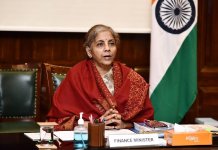The relationship between the government and the RBI is under transition in the context of the adoption of the inflation targeting regime. The budget also included some provisions to accommodate the new central banking habits. A monetary policy framework agreement was announced in the budget.
But a rather unexpected one was the formation of the Public Debt Management Authority (PDMA) by the Finance Minister.
The PDMA is aimed to take away RBI’s power and responsibilities to manage government’s debt. So far, the RBI is engaging in government’s debt issue and procurement and other associated banking functions like keeping government’s cash balances and extending temporary loans to the government through WMA.
Taking away the debt management function and transferring it to a government wing like the PDMA means the functional territory of the RBI is shrinking.
At the same time, any government body like the proposed PDMA is not as fit as RBI to manage government’s debt operations. Because it is more a banking operation and cooperation from the central bank is necessary.
Now, why the government has announced and later withdrawn the decision on PDMA formation?
The move is more tactical and it is a radical reaction to the seemingly arrogant stand of the RBI on inflation targeting. In the recent past, the central bank has no opportunity to depict that it doenst mind compromising other responsibilities for the sake of inflation targeting. These other functions like credit delivery and debt management are very important for various stake holders like the government, business, banking system etc.
It is easily observable that the RBI is now is in a mood of vigorously embracing inflation targeting regime. It is trying to depict all other functions as subordinate to the primary function of inflation targeting. Most debate and public discourses are stage managed by the RBI to declare that inflation targeting is the only function and other responsibilities are just distractions.
In the past, the walk alone statement by the then FM Chidambaram and hard stance of the RBI on rate cuts are indicative of the central bank stand.
The government was seriously hurt though it is extending support to the new monetary policy framework.
Understandably, it was awaiting an opportunity to hit back and the PDMA is a government reaction in this context. The formation and the withdrawal decision of PDMA is a warning to the central bank. It is a message that if the central bank marginalizes the other conflicting jobs, such functions will be given to other bodies.
Already, the government has decided to give some of the minor RBI powers to other regulators like the SEBI.
Now, after the government move, if the RBI is feeling that its powers are reduced with every government move, it has to blame its own past activities for this.
Implementing monetary policy in a clout thirsty manner without considering the developing features of the economy is not suitable in the Indian terrain. The RBI has to accommodate other priorities as much as possible, and especially without hurting and without remaining insensitive to the plight of other stakeholders; including the government, the financial markets and the economy as a whole.










